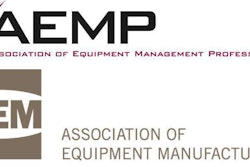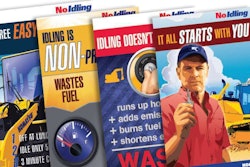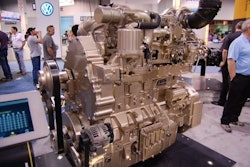 Not all fleet managers are as happy as this guy when using telematics.
Not all fleet managers are as happy as this guy when using telematics.Last week I attended the Association of Equipment Management Professionals annual retreat and strategy session. As chairman of the AEMP’s conference education committee I have a lot of opportunity to rub elbows with end user members and I usually pick up some good intelligence on what the managers of these big fleets are thinking, what their pain points are and what keeps them up at night.
If you’re not familiar with the AEMP, they are equipment fleet managers for some of the top construction companies in North America. The average AEMP end-user manages 1,333 pieces of equipment worth $157.2 million dollars and controls a maintenance budget of $12.1 million per year. Serious iron.
The annual retreat is more of a planning and strategy session, rather than educational, but in casual conversations you can learn a lot from these Top Guns of the equipment management profession. And what I heard this year was a deep sense of frustration with telematics.
AEMP has been working to bring an industry-wide standard to telematics data feeds for several years. The standard, when it becomes implemented, will include 19 machine data points and dozens of additional machine fault codes. Making these standard will eliminate the need to go to a different website to collect telematics data from each different OEM.
AEMP has also partnered with AEM on the telematics standard and there’s even a German association interested as well. So that part of the problem is steaming toward an eventual solution.
But for end users a big problem that still exists is what many describe as “the fire hose analogy.” In other words, getting the information you need from a telematics data stream is like trying to take a sip of water from a fire hose. The volume of data overwhelms many fleet managers’ ability to use it. The other problem is the complexity of the technology itself.
There is so much technology coming at us these days it’s hard to separate the wheat from the chaff. And the design and functionality leaves a lot to be desired.
Younger people have the advantage of growing up with nebulous and non-intuitive design. Part of their mental framework is to just keep pushing buttons until they hit the right one, or the right combination. Plus, they have the time to experiment and learn via trial and error. I think this is one of the reasons so much technology, software and websites are so poorly designed—because 20-somethings are used to it and used to figuring out work-arounds.
Older guys don’t have the time and want technology that’s easy to figure out. Pull on the cord, the chainsaw starts. Push on the brake, the truck stops. No clever options please. Most of the AEMP fleet managers worked their way up from being mechanics and mechanics are good at deductive reasoning but computer and digital technology requires a kind of circular reasoning that’s alien to the breed.
I think it also bothers mechanics when they can’t figure something out for themselves. Drives them crazy, in fact. And this may be the biggest challenge of all.
The truth is, unless you’re a computer guy, or unless you spend long hours learning this stuff, you’re never going to figure it all out. What most contractors, mechanics, and fleet managers need to realize is that they’re going to have to hire someone to figure it out for them. And that person is likely to be young, in their 20s, and might not know much about construction or equipment.
If you’re a seasoned veteran in this industry, your job is not to figure out “how” this technology works, but to learn “what” it can do for you and “why” you need it. Leave the “how” to the 20-somethings. You’ll have to educate your technology people on what information you need from the fire hose and let them educate you on what it can do for you.
But it’s not that you delegate and forget. I think this quote and article from the online news site Quartz, says a lot: ”Managers who aren’t thinking about technology all the time are not doing a large part of their job.”
AEMP will be dedicating the entire educational portion of it’s fall conference to telematics. Whether you’re starting from square one or have some knowledge and are already using telematics in a construction fleet environment there should be sessions to address needs at all levels. The conference will run November 2-4, in Nashville, Tennessee. The individual session contents and speakers are being finalized now and should be published in the next few weeks. Check back here and at www.aemp.org for more details.









